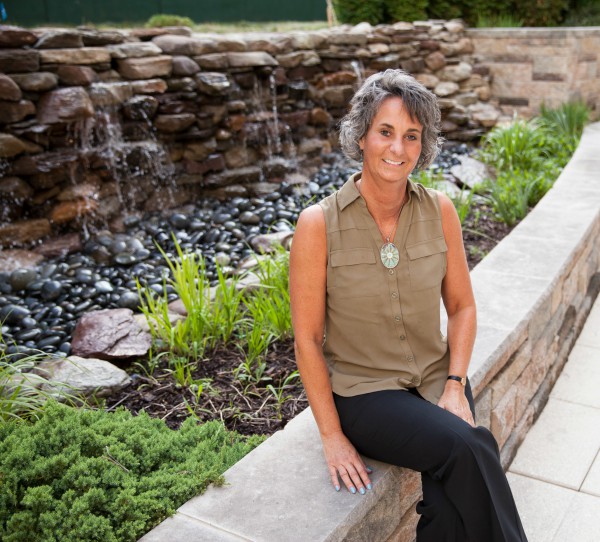Do you know if your proptech will maintain its appeal to future generations of prospects? If not, no worries. We’ve done the research for you. We’re exploring proptech with staying power, tools for today that will continue to deliver results well into the Gen Z lifecycle. Cut costs with lasting proptech Proptech is a major investment in money and hours. The technology you choose should evolve with users’ changing needs to ensure that you get the best impact per dollar. Not all new solutions will stand the tests of time. Are you confident that your proptech lineup is ready for Gen Z? Read on for the essential solutions that your organization needs. REACH brings you the freshest data on Gen Z Gen Z is comprised of about 67 million people, the oldest of whom turn 25 this year. We learned more about the largest renter demographic ever through the REACH by RentCafe Gen Z Renter Study. This survey of more than 10,000 next gen renters gives insights into their habits and interests. The results confirmed what we’ve observed: Gen Z is an intelligent, tech-savvy generation that values efficiency and creativity. They value proptech that feeds their need for contactless transactions as well as quick and easy access to information and services. Tech for targeted and engaged marketing One average, Gen Z search terms are 4.9 words long, longer than all previous generations. They know that using detailed queries will bring them closer to what they really want rather than wading through pages of irrelevant results. Appeal to their specific searches with longtail keywords and campaigns crafted by search engine marketing professionals. Expert search engine optimization (SEO) strategies will help your content rank well and be discovered by prospects. When supplemented with pay-per-click (PPC) advertising,...
Avoiding Coliving Pitfalls
Today's rental trends
As a junior, I lived in the Creative Writing Theme House at Agnes Scott College. A beautiful five-bedroom house just outside of campus gave students an opportunity to live and work with like-minded peers. I loved the experience: group meals and activities, weekly poetry readings, and the ability to workshop my short stories with people who “get it.” Too bad I wasn’t a business major. Then I would have seen the coliving trend coming and profited from it. But the experience did successfully foreshadow the pitfalls of coliving. Multifamily property managers, take note. Coliving is trending and is likely here to stay. By avoiding the pitfalls of your competitors, you can optimize your profits for years to come. What is coliving? Coliving is all the rage in multifamily housing. It combines the best aspects of Airbnb’s short-term rentals and city experiences. Coliving quarters include furnished private studios and multi-person shared flats. Depending on the level of luxury, there are private or shared bathrooms. Common areas usually include the kitchen, laundry room, and exterior spaces. Flexible rents make coliving spaces different than dorms or apartments. Yet the key differentiator in the industry is the themed living. Coliving communities unite like-minded renters. Participants are often professionals in a similar field, people interested in exploring a neighborhood or city, or less tactile themes like inclusion. Yardi client Cushman & Wakefiled recently released a detailed national report on coliving. There are a few common features that coliving properties and their residents share: Property managers within major metropolitan areas are seeing the highest demand for coliving. Such locations offer low rents near popular job hubs. The average coliving resident is in their 30s. The average median income of coliving residents is about $60,000 per year. Additionally, there are a few common characteristics among coliving residents: Digital nomads make up a notable portion of coliving residents. Remote workers want social interaction without the confines of an office. Coliving combines the best of apartment living with coworking space. People who have recently transferred to a new city see coliving as a way to make friends and familiarize themselves with the city before establishing roots. Transient employees often turn to coliving to make friends and get to know the city without committing to long-term, pricy leases. Missing the mark: finding the balance between privacy and intimacy Nationwide, surprisingly few people are interested in coliving, reports the National Multifamily Housing Council & Kingsley Associates Resident Preference Survey. Though there is a lot of hype and investment in coliving start-ups, apartment residents aren’t sold on the concept. About 69% of survey respondents said they “definitely would not be interested” in coliving. Why not? Finding the balance between privacy and intimacy is where several coliving developers have missed the mark. Take my stint in a coliving community as an example. We nine housemates valued our time together. We enjoyed cooking together and attending literary events around town. We got to know each other quite well, including dietary preferences and quirks. Unfortunately, there were frequent meetings where we nearly went Jerry Springer on each other over the messiness of common areas, noise control, and guest management. Living with strangers will never appeal to everyone. But for those who have considered the option, privacy and intimacy can make or break a coliving community. Shared bedrooms and bathrooms make it more challenging to control messes and coordinate schedules. There is a greater demand for floorplans with private bathrooms and bedrooms. Privacy resurfaces as a general concern. Sound proofing and other privacy measures in personal spaces increase resident satisfaction. Though prospects value privacy, they also value intimacy. Ideal living arrangements are between four to ten residents. Larger housing groups were perceived as less personable and less desirable. A steady flow of unmonitored guests also interrupts the perception of intimacy. A community can quickly go from cohesive coliving to frat house nightmare without proper controls in...
Senior Living Leases
Make Paperwork Less Work
Does your senior living community offer electronic leases yet? Maybe you’ve heard the term, but don’t know if it’s worth the transition. Well, rest assured, there’s plenty to like. From faster sales cycles to searchable online records, electronic leases make the move-in process painless – for both your staff and your residents. At their core, electronic leases, or eleases, are a legal and secure online version of the document that you already know so well. But you’re missing the full picture if you think it’s only a digital agreement thrown on a computer screen. A full electronic lease management solution like what Yardi offers can help you generate customized leases in a few clicks, get mobile signatures from family members and store the forms in one centralized place, saving hours of labor (and who knows how many headaches). We’ve built eleasing into the entire Yardi Senior Living Suite. From creation to approval to signing, everything flows together seamlessly so your sales counselors never have to retype a thing or search for another missing document. And at the executive level, you can manage leases across communities and states, pushing real-time rates for rooms and services to teams on the ground floor. Here’s a quick look at how the process works in the Yardi senior living solutions. Generate a new lease in no time with Yardi Senior CRM Once a prospect has decided to join your community, your staff can jump into Yardi Senior CRM and quickly create a new lease specific to that resident. Senior CRM offers an automated, online workflow, which guides staff through each step of the prospective lease agreement: Select the community, enter the deposit, choose a unit and add any incentives or concessions. They can then adjust the care level and...
3 Mobile Musts
Property Management Time Savers
Property managers are busy people. It seems like there is always more to do! Paperwork and desktop data entry can really slow you down, especially when you need to be onsite. No one can be in two places at once. Fortunately, today’s technology is making it easier to work more effectively from anywhere. Mobile tools empower property managers with a streamlined, convenient, and modern way to do business. Mobile leasing, mobile payments, and mobile maintenance are three innovative solutions currently available to small to mid-size residential property managers using Yardi Genesis2 that will help you get more done in less time. Mobile Leasing Mobile leasing is a must in today’s marketplace. In fact, the recent NMHC/Kingsley 2015 Renter Preferences Study that polled nearly 120,000 residents revealed that 85% of renters prefer to apply online. Not only is it more convenient for them, it also saves you time and increases your opportunity to convert more leads into leases. When a potential renter is ready to begin the leasing process, your mobile-friendly website should be ready to turn prospects into residents with step-by-step online leasing. Mobile leasing solutions let website visitors view real-time pricing, see unit availability, and complete online applications right on your property websites from any device. Applicants can fill out and submit all required forms online day or night to complete the leasing process. This means you can now fill your vacancies around the clock without being limited by your office hours. With mobile leasing capabilities, you never have to worry about the time-consuming process of scheduling appointments and manually processing applications. Applicants just check out your site, apply online, and move on to the next, more exciting step of being a renter. Mobile Payments Paying rent online is a convenience that many...
Becoming a Big Fish
Multifamily Marketing in D.C.
When it comes to the Washington, D.C. rental market, VP of Marketing Karen Kossow finds herself in a big pond with plenty of fish. As the one-woman marketing team at Community Realty Company (CRC), she is determined to grow with limited resources. She is overcoming her small fish status by working smarter, not harder. Step one, Kossow made sure that CRC offered what renters want most. “The funny piece is, other than the rent, the Millennials and the Boomers are looking for the same things,” Kossow observes. “They want the good locations, the walkable locations, the amenities, and the social aspect.” Community Realty Company properties are already in coveted locations such as Pennsylvania Avenue and Foggy Bottom. The next natural step was to begin the process of renovating the properties to reflect modern expectations. Properties are being renovated on turn, with upgrades like improved space allocation; granite, stainless and other upgraded finishes; and wi-fi accessibility throughout the building. The latter was no small feat since some structures were erected in the 1960s. Kossow then gave the renovated properties professional glamor shots. These images are accompanied by resident testimonial videos. Combined, the media efforts give prospects a taste of what CRC has to offer—but there was still more work to be done. Step three for the growing business: getting the right tools in place. “I’m excited to get all of the software rolled out so we can go out and start pitching more business, showing everybody that we’re not the little teeny tiny company and that we can compete with the big boys in some areas,” says Kossow. To help level the playing field, Kossow uses Yardi RentCafe. “I am a one-woman marketing show who has also overseen much of the software roll out. Being able to tackle...
Social Marketing Solution...
Yardi Marketing Suite™ expansion
These days, marketing a multifamily community to a prospective resident is often an entirely online experience. When a prospect goes to social media to ask friends or family: Where should I live next?, savvy communities are making sure their properties are present. It’s an exciting, though potentially challenging, space in which to connect and engage. The influence of a positive resident referral or input from a trusted friend can make a big difference when it is time to select a new place. One recent industry survey found that up to 75 percent of renters had done online research, including looking at reviews, in order to select their next apartment. They valued that input even more than positive word of mouth, according to the survey results. It’s also been noted that while 63% of apartment residents say they are willing to write a positive review of their apartment community, just eight percent have been asked to do so, NAA audiences learned this week. That means there are huge opportunities for multifamily communities to grow their online presence and enhance leasing opportunities, using the right marketing tools. Not only do apartment communities need to build goodwill and cultivate positive feedback from existing residents, but they need to be engaged online and ready to reach, impress and ultimately welcome prospects as happy residents. The expanded Yardi Marketing Suite™ is a powerful tool for managers looking to do just that using the enhanced capabilities of RentCafe™. This online platform supports the entire leasing process, and is fully integrated with Yardi Voyager™. “The Yardi Marketing Suite features a full complement of mobile online leasing and resident services, and now includes tools to expand your online presence with leasing and resident referral programs tied directly to social media. This smart...
Let’s Talk Online Leasing...
With Steve Lefkovits
There’s so much talk in the property management industry right now about the future of leasing that we wanted to dive deep into the topic with the help of Steve Lefkovits, Executive Producer of the Apartment Internet Marketing Conference coming up in Arizona next month. Steve is the author of this interesting piece in this month’s Units magazine called Customers as Kings. He agreed to answer some trending questions from us on the apartment industry’s next big thing: marketing and leasing that’s online, mobile and more efficient than ever. TBS: What do you think is more important – mobile friendly property websites or mobile specific apps, and do you need to create both? SL: I think that mobile web sites are more important for attracting residents and mobile apps have more possibilities for long-term engagement with existing renters. Right now 10-20% of web page views during a search come from mobile devices. Some property management companies report even more, depending on how they’re optimizing their lead flow and how many touchpoints they have. It’s obvious that few people are going to install an app in the middle of their search, their far more likely to use their phones on the fly as part of the search. On the other hand, the possibilities are endless for meaningful engagement in a property-level application. The easy things to think of relate just to the property – paying rent, maintenance requests and tracking packages. I think smart companies are going to start focusing more on lifestyle elements in an app that encourage healthy living and neighborhood engagement. If I built an apartment app today it would have neighborhood services and discounts, recipes, exercise information, attractions and events, holiday information and some type of game that made it fun. ...







